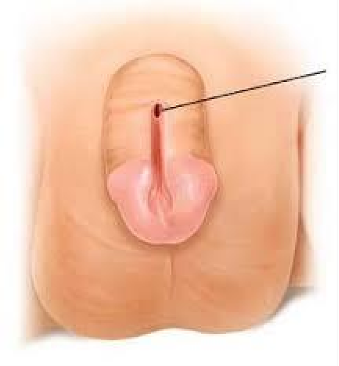Which term is used to describe an abnormally increased convex angulation in the curvature of the thoracic spine. looks like a "hump back?
Ankylosis
Kyphosis
Lordosis
Scoliosis
The Correct Answer is B
The term used to describe an abnormally increased convex angulation in the curvature of the thoracic spine, which appears as a "hump back" or rounded upper back, is kyphosis.
Kyphosis refers to an excessive forward rounding or curvature of the thoracic spine, leading to a visible hump-like appearance. It can result from various causes, including poor posture, congenital abnormalities, osteoporosis, or certain medical conditions.
ankylosis in (option A), refers to the abnormal fusion or immobility of a joint, typically due to inflammation or injury.
Lordosis, in (option C) refers to an excessive inward curvature of the lower back, causing the abdomen and buttocks to protrude.
, scoliosis in (option D), refers to an abnormal sideways curvature of the spine, typically in an "S" or "C" shape. It is different from kyphosis, which primarily affects the thoracic spine and results in a rounded upper back.
Nursing Test Bank
Naxlex Comprehensive Predictor Exams
Related Questions
Correct Answer is C
Explanation
Epispadias is a congenital condition in which the urethral opening is not located at the tip of the penis as is typical but rather along the ventral surface (underside) of the penis. In severe cases, the urethral opening may extend all the way to the bladder.
absence of a urethral opening in (option A) is incorrect because it, describes a condition called urethral agenesis or aplasia, where the urethral opening is completely absent. This is a different condition from epispadias.
a penis shorter than usual for age, in (option B) is incorrect because it is not specific to epispadias and could be caused by various factors unrelated to the condition.
a urethral opening along the dorsal surface (topside) of the penis in (option D) is incorrect because it, is a condition called hypospadias. Hypospadias is another congenital anomaly where the urethral opening is located on the underside or along the ventral surface of the penis, but it is not synonymous with epispadias.
Therefore, epispadias specifically refers to the urethral opening being situated along the ventral surface of the penis.

Correct Answer is D
Explanation
When the skin surface is caked with desquamated skin and sebaceous secretions after the removal of a cast, the nurse should suggest washing the area with warm water and soap. This will help to gently cleanse the skin and remove the accumulated material without causing unnecessary trauma or irritation.
Option A, applying powder to absorb the material, may not effectively remove the caked material and could potentially lead to further clumping or discomfort.
Option B, vigorously scrubbing the leg, can be harsh on the skin and may cause skin irritation, redness, or even abrasions. It is important to be gentle and avoid excessive scrubbing, especially on the fragile and recently exposed skin.
Option C, carefully picking the material off the leg, can increase the risk of skin injury or introduce bacteria into the skin. Picking at the skin should be avoided to prevent further damage or infection.
Therefore, option D, washing the area with warm water and soap, is the most appropriate and gentle method to remove the caked material from the skin surface
Whether you are a student looking to ace your exams or a practicing nurse seeking to enhance your expertise , our nursing education contents will empower you with the confidence and competence to make a difference in the lives of patients and become a respected leader in the healthcare field.
Visit Naxlex, invest in your future and unlock endless possibilities with our unparalleled nursing education contents today
Report Wrong Answer on the Current Question
Do you disagree with the answer? If yes, what is your expected answer? Explain.
Kindly be descriptive with the issue you are facing.
